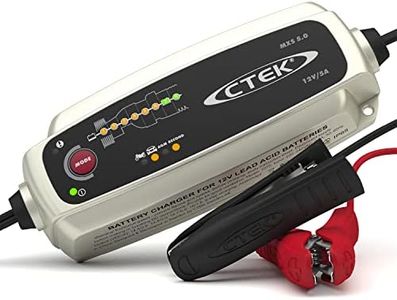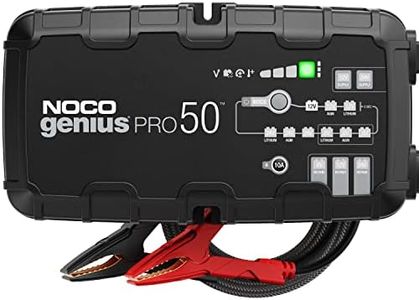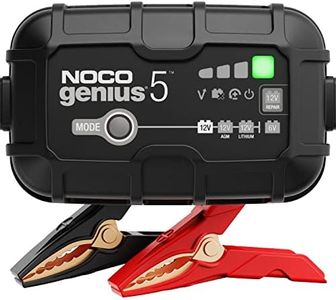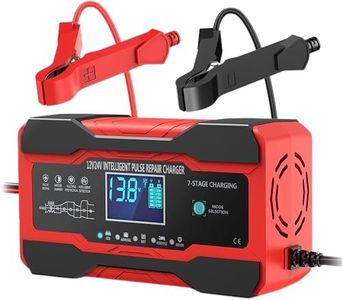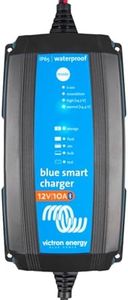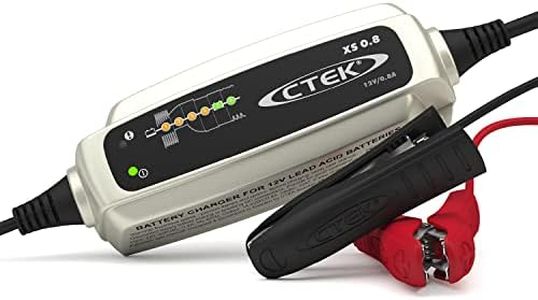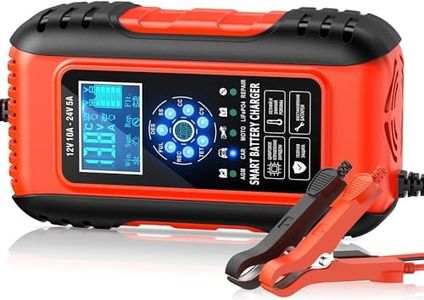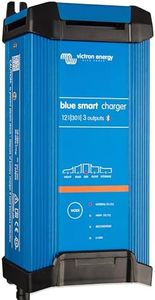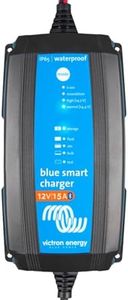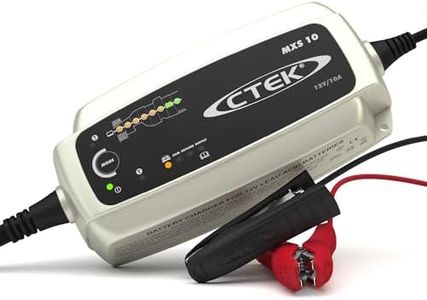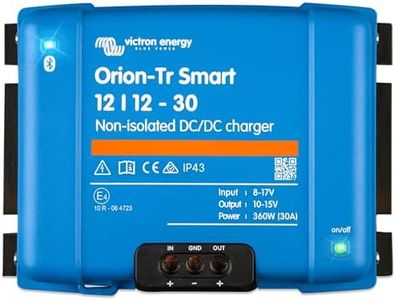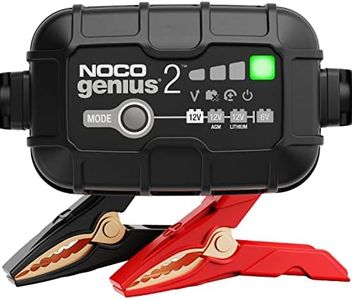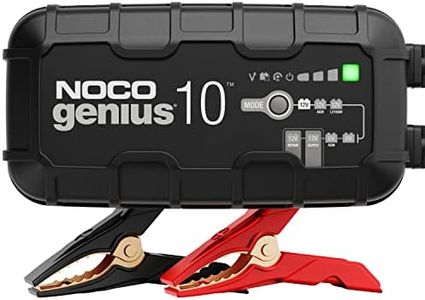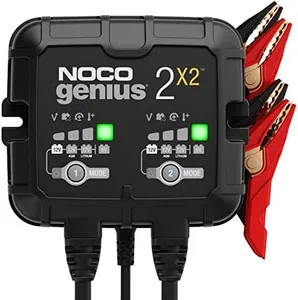We Use CookiesWe use cookies to enhance the security, performance,
functionality and for analytical and promotional activities. By continuing to browse this site you
are agreeing to our privacy policy
10 Best Float Battery Chargers
From leading brands and best sellers available on the web.Buying Guide for the Best Float Battery Chargers
Choosing the right float battery charger can make a big difference in extending your battery's life and ensuring your equipment is always ready to use. Float chargers are designed to maintain batteries at their optimal charge level without overcharging, making them ideal for vehicles or tools that aren't used every day. When picking a charger, it’s important to consider the type of battery you have, how much automation or monitoring you want, and where and how you'll be using the device.Voltage CompatibilityVoltage compatibility refers to the voltage rating of the charger, which must match the voltage of the battery you wish to charge. Common options include 6V and 12V, though other voltages exist. Using a charger with the wrong voltage can damage your battery or make the charger ineffective. To choose the right voltage, always match your float charger to your battery’s specifications. If you have several batteries of different voltages, you might want a charger that can switch between settings.
Charging Current (Amps)Charging current, measured in amperes (amps), determines how quickly a charger can supply power to the battery. Most float chargers supply a low current, around 1 to 2 amps, which is gentle and prevents overcharging. Higher amperage chargers can charge faster but might risk damaging smaller batteries if not properly controlled. For maintaining or charging standard car or motorcycle batteries, a low current float charger is usually best. If you want to keep smaller batteries topped up, go for the lowest current; for larger batteries, make sure the charger supplies enough current to keep it maintained, but not so much that it risks overcharging.
Automatic Shutoff and Float ModeAutomatic shutoff means the charger stops supplying power when the battery is fully charged and switches to a maintenance or float mode. Float mode maintains the battery at a safe charging level without overcharging. This feature is crucial because it prevents battery damage from being left on the charger too long. Pick a charger with an automatic shutoff and proper float operation if you want peace of mind—especially if you plan to leave batteries unattended for days or weeks.
Battery Type CompatibilityBattery type compatibility refers to whether the charger is suitable for the kind of battery you have, such as lead-acid, AGM, gel, or lithium-ion. Not every float charger works with all battery types. Charging with the wrong type can shorten battery life or pose safety risks. Check the information for your battery, and choose a charger that specifically lists compatibility with that type. Many modern chargers are versatile, but always confirm before connecting.
Protections and Safety FeaturesSafety features can include protections against short circuit, overcurrent, overvoltage, reverse polarity, and overheating. These help keep both the charger and your battery safe if something goes wrong, like a misconnection or a power surge. For anyone worried about safety or new to battery maintenance, picking a float charger with built-in safety features offers reassurance and helps protect your investment.
Indicator Lights or DisplayIndicator lights or a simple display show you the status of the battery and the charging process. Basic models might have a single light, while advanced ones offer detailed info about charging stages. This feature is helpful if you want to easily check whether your battery is fully charged or if an issue needs attention. If you value convenience or want a visual confirmation your battery is being maintained, look for easy-to-read indicators.
Weather Resistance and Build QualityWeather resistance refers to how well the charger can handle exposure to elements like dust, moisture, and temperature changes. If you’ll use the charger outdoors, in a garage, or another exposed location, it’s wise to choose a model with good weather resistance and sturdy build. For users who want a charger to leave connected in less-than-ideal conditions, focus on products rated for outdoor or rugged use.
